Non-M versions of the E36 serve as introductions to BMW performance. Now, after owning several E36s, does the owner of this E36 M3 feel it truly fits the bill?
Cecil Perez of Motorsport Hardware has owned many 3-series BMWs in his lifetime—enough to know that E36 BMWs are great driver's cars. However, he never actually owned the M3 version of the E36 until 2017. “I purchased this E36 M3 from a BMWCCA member,” says Cecil, “because I already had an idea of how well normal E36s drove, so I wanted to fine-tune my driving skills and experience the legend of the M3 for myself.”

Unlike most tracked M3s, this one was in great condition for what it was. Sure, it had parts that were worn from track days, but overall it was worth the money paid. “It just needed a bit of TLC,” said Cecil, “and, since then, I've been systematically improving it and evolving the car in stages as my driving skill keeps developing.”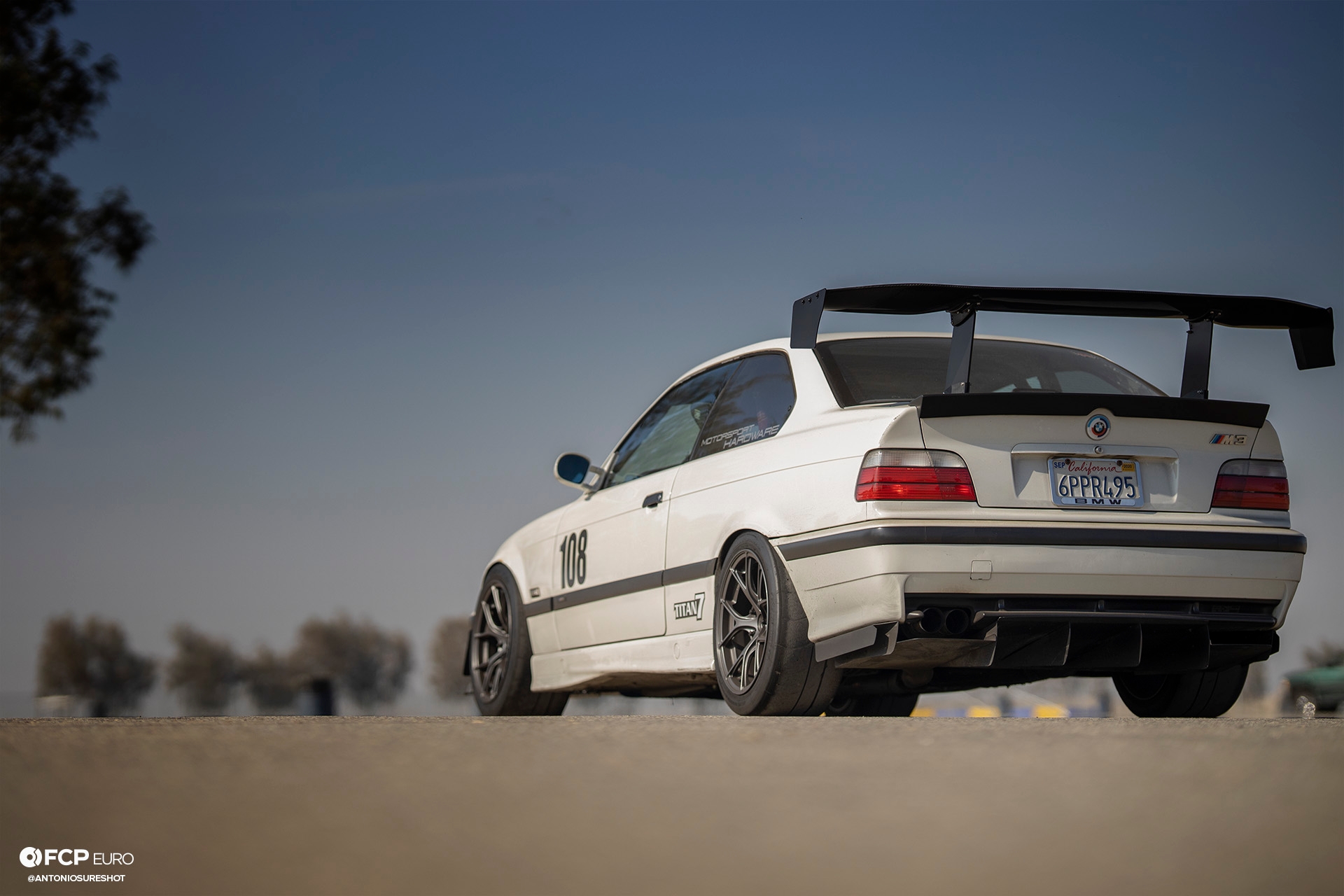
The Alpine White paint is the original since it was new, and looks almost miraculous considering the track history. Additional work went into making the car stick to the pavement better—the fenders were pulled and rolled to allow additional clearance of the Titan 7 T-S5 wheels in 17x9.5J +35mm offset, wrapped in 255/40R17 Nitto NT01 tires.
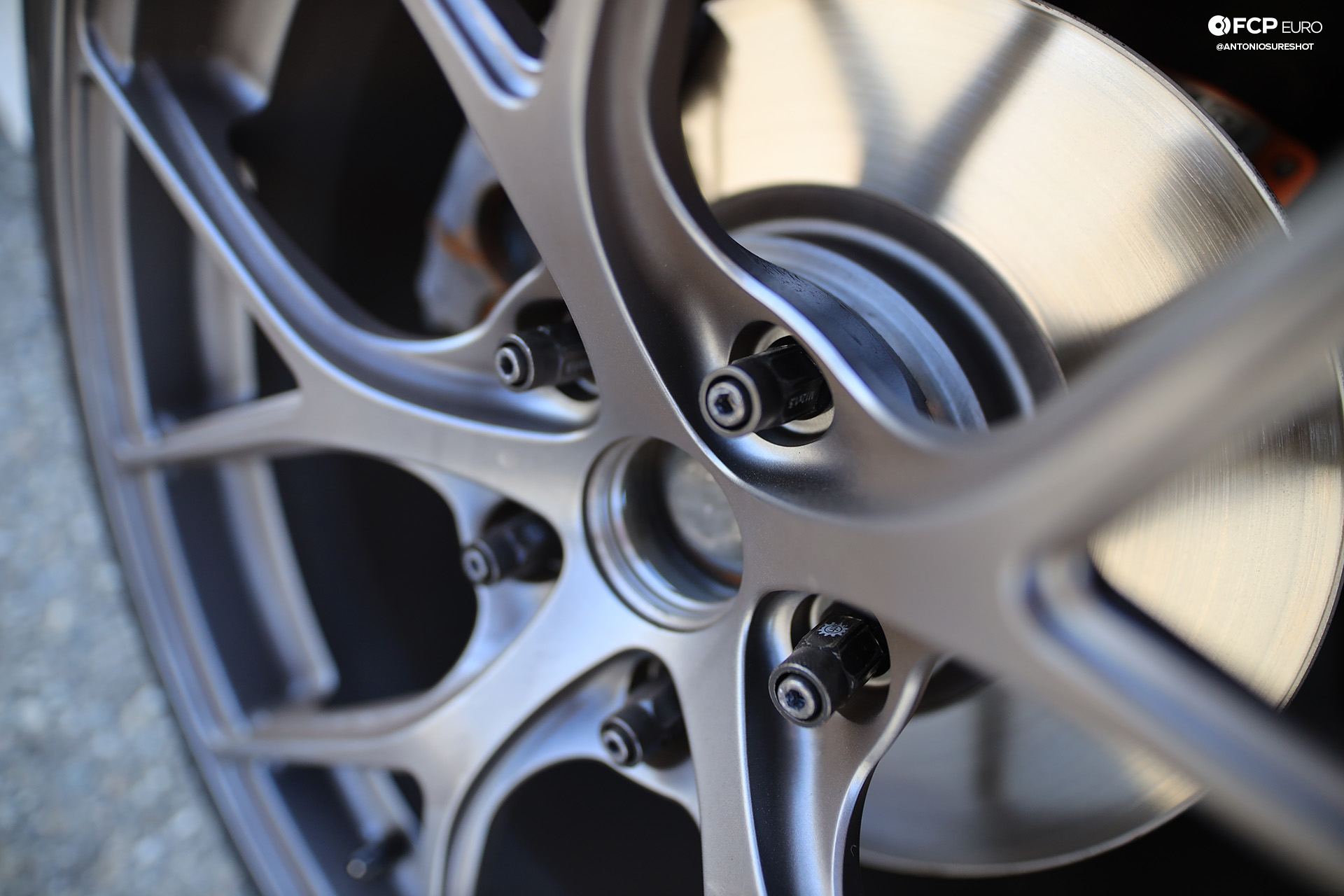
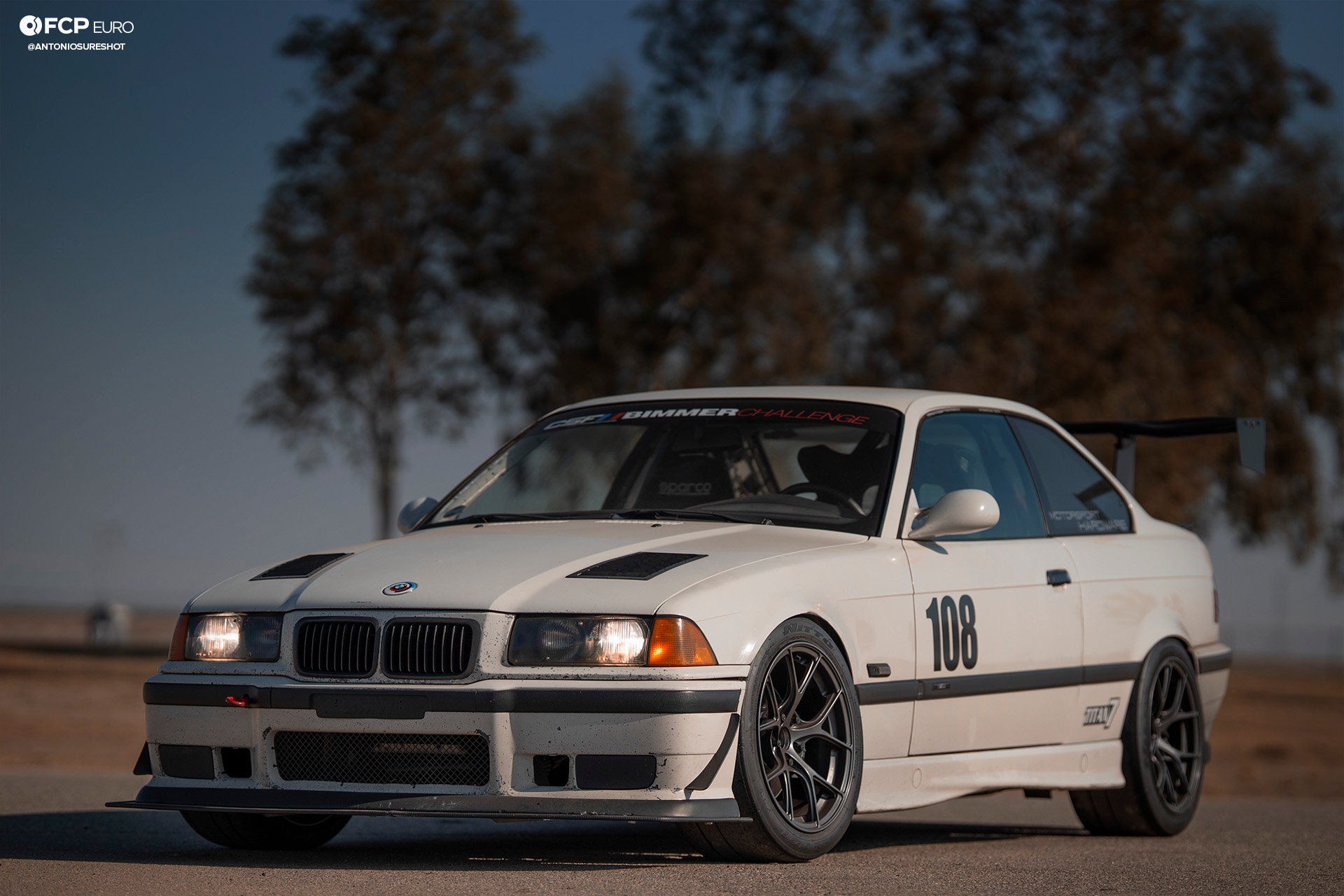
The front bumper is OE from 1995 along with an AC Schnitzer replica front lipwith a custom-made splitter made from Alumalite. Alumalite is a pretty cool material used in the signage industry. It's corrugated plastic sandwiched between two thin sheets of aluminum. This makes it incredibly rigid and able to take high loads while remaining remarkably light. It is a favorite among DIY aero enthusiasts.

The rear bumper is OE, but has an MKAH Motorsports rear diffuser installed. On top of the deck lid is an RS Future GT Wing.
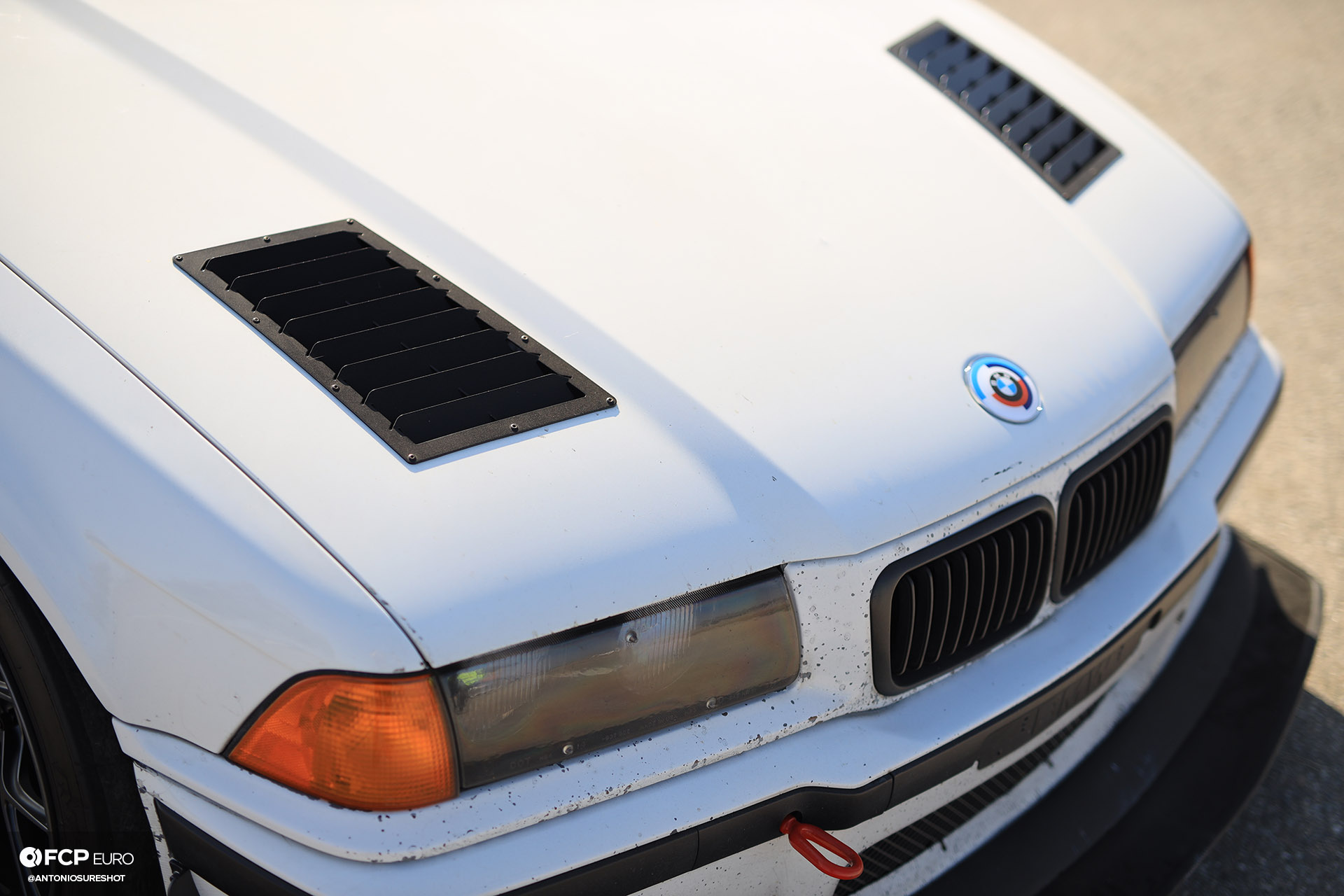
Finally, like the bumper, the hood is OEM but has a set of Trackspec Motorsports hood vents to evacuate the engine bay of trapped hot air.
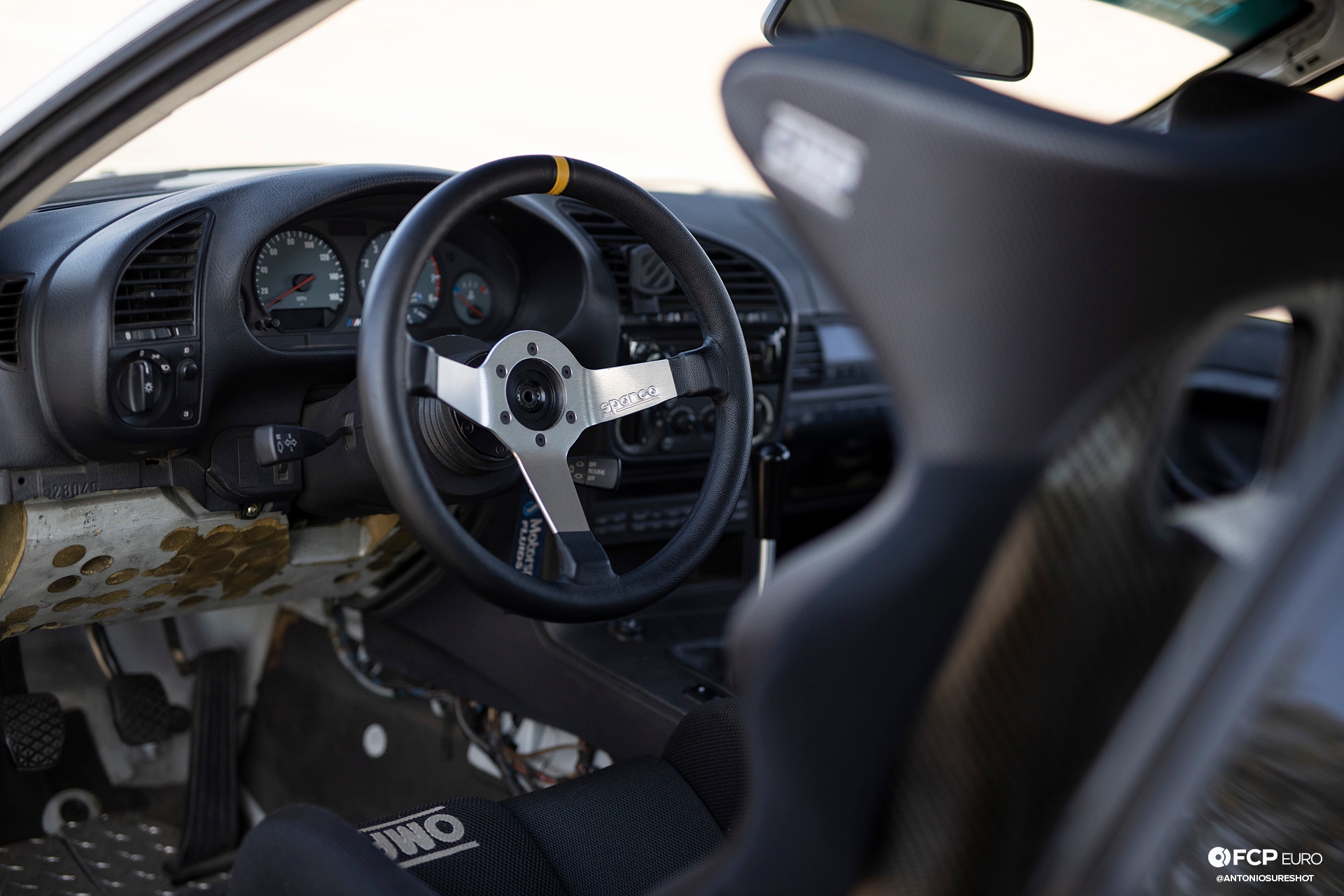
The inside of Cecil’s E36 is mostly stock with features that only improve driver performance or occupant safety while on track. You can see that a Sparco steering wheel has been mounted to the car with the addition of a Sparco quick release steering wheel hub.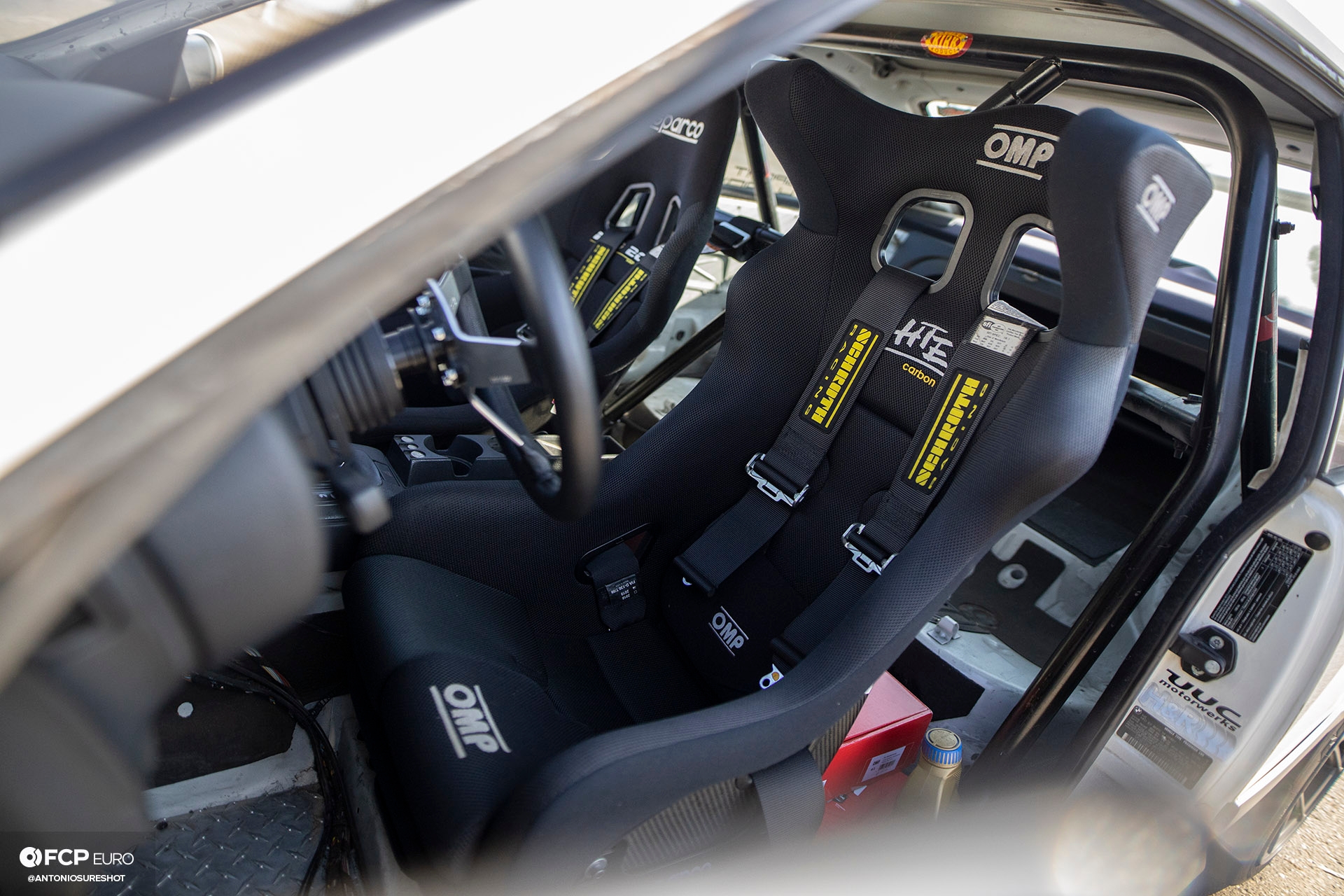
Two different brands of seats are used between the driver and passenger. The driver sits in an OMP HTR carbon fiber seat and provides nearly full containment for its inhabitant. The passenger sits in a classic Sparco Pro 2000. However, both dwellers are secured to their seats using a Schroth six-point harness with a Kirk Racing roll bar behind them.
Rowing the gears is done with precision and swiftness thanks to an AKG Stage 2 short shifter. It also features the AKGs DSSR shift selector rod to replace the weaker plastic version that BMW chooses to use from the factory. Keeping the transmission from moving and making for even more precise shifting is a Condor Speed Shop transmission mount. An M5 clutch kit that features a six-puck disc and lightweight flywheel sends power to a 3.38:1 ratio differential from an automatic version of the E36 M3.
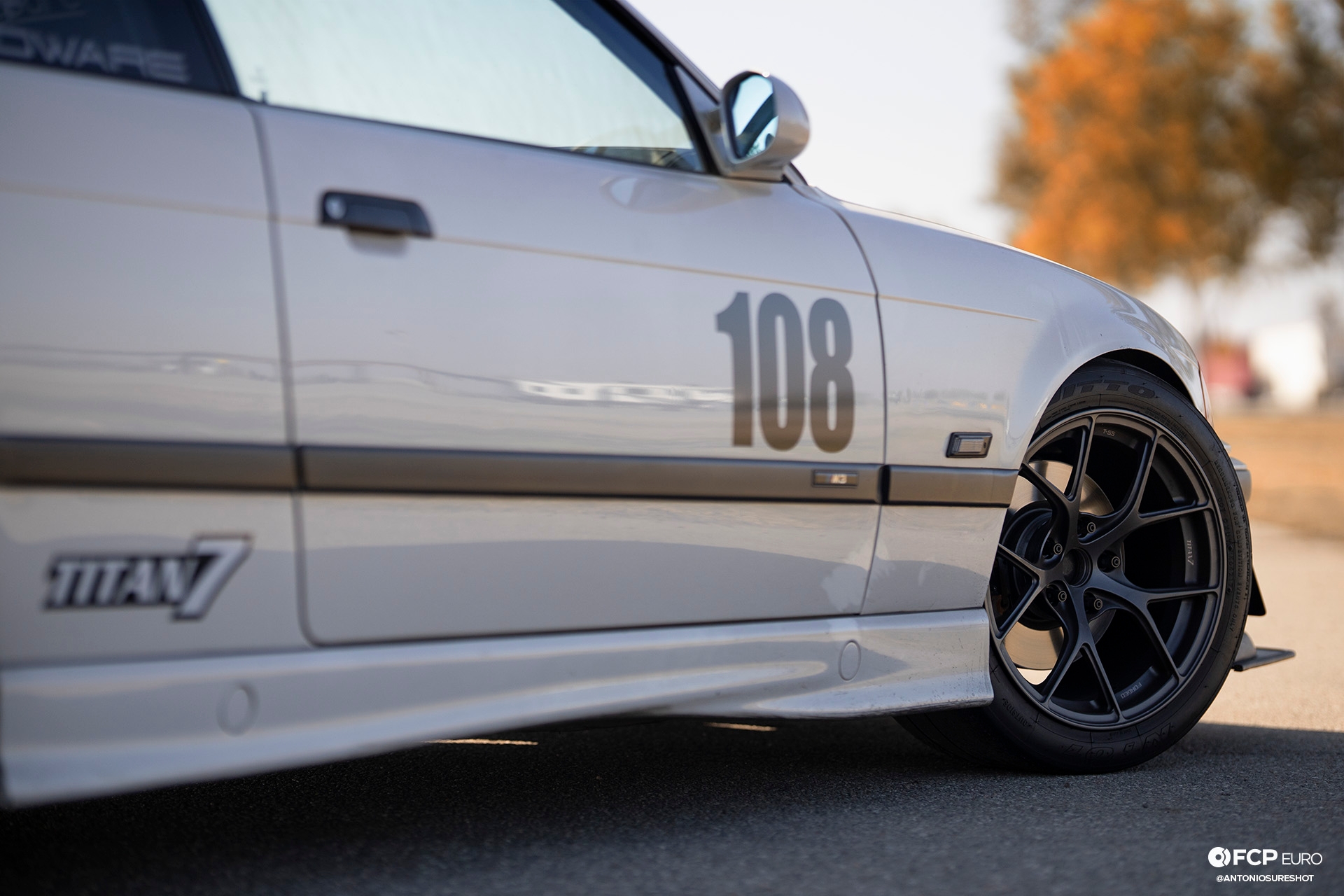
Under those Titan 7 wheels are stock E36 M3 brakes and rotors. However, for proper track and street brake performance, a set of Project Mu Club Racer brake pads are used front and rear. This high performance brake brand from Japan offers high-temperature performance for track use, but still has great bite at colder temps on the street. Fluid is fed to the brake calipers through a set of Condor Speed Shop stainless steel brake lines.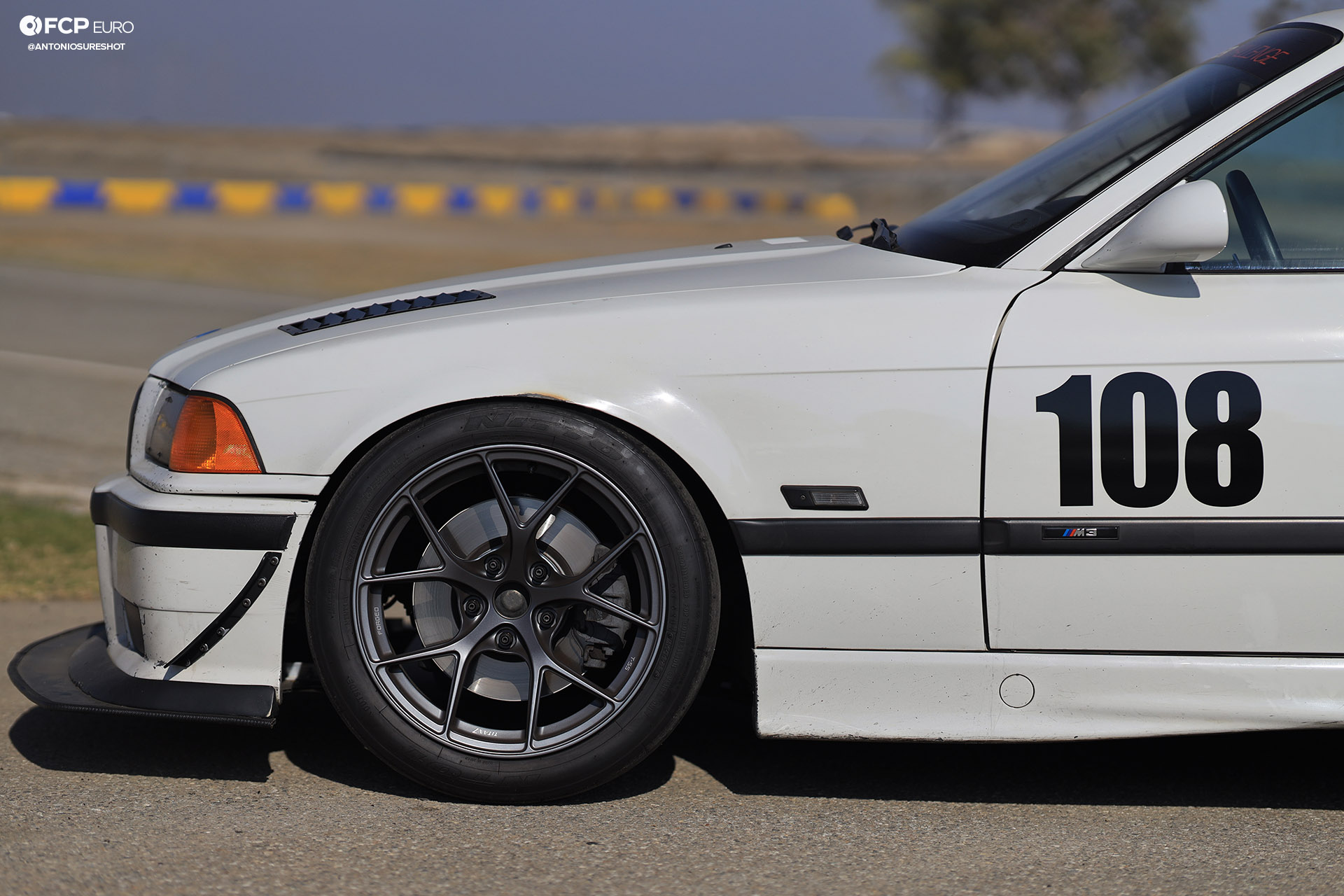
Additional track and street compromise is found in the suspension. Custom-valved AST 5100 coilovers are used with a set of Swift Springs. The 10kg/mm front and 12kg/mm rear rates aren’t too stiff for street use, where every bump would jar you out of your seat. However, they are also not too soft for track use, where the suspension would bottom out too easily. This type of compromise is important because Cecil drives his car to and from the track.
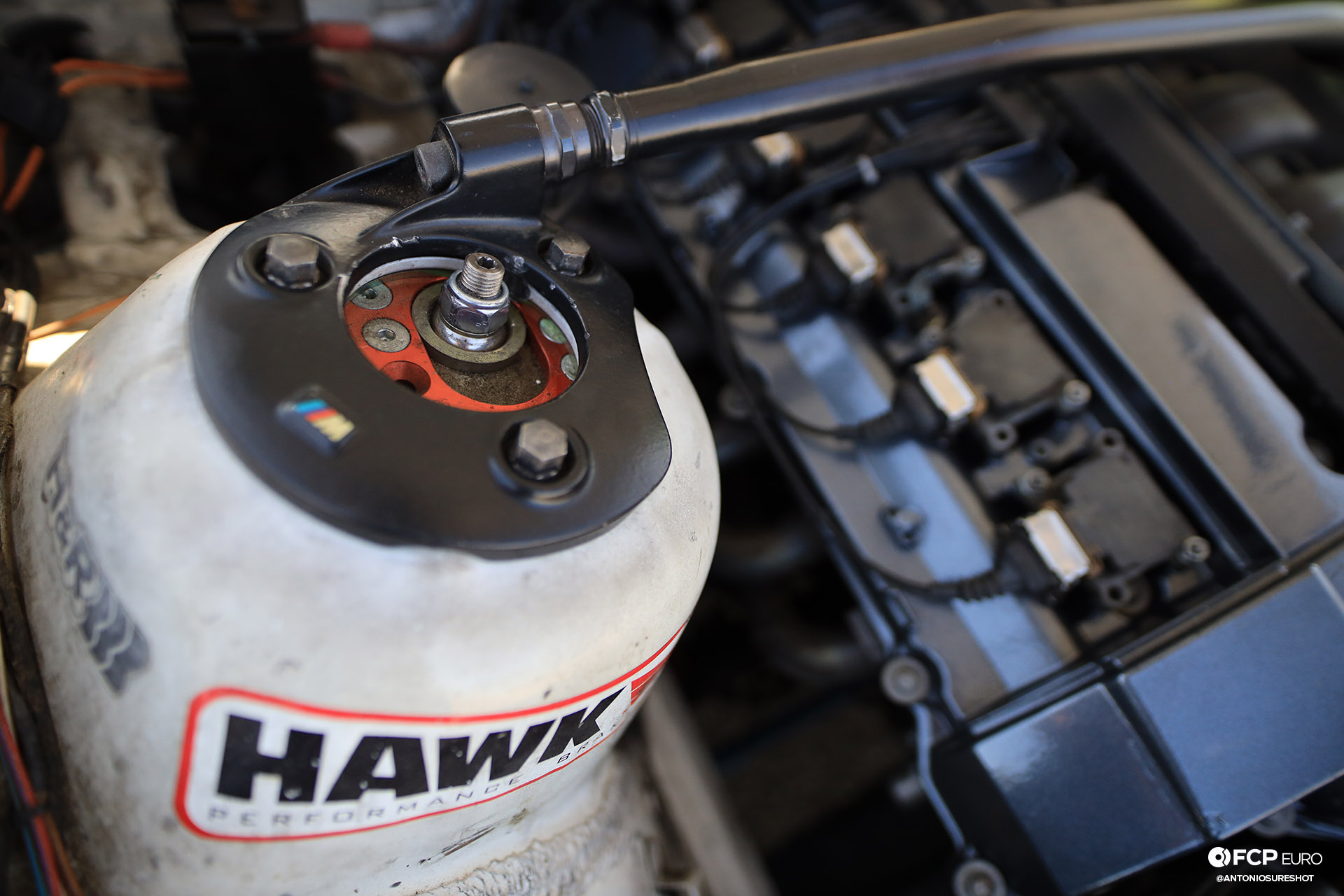
Camber is set upfront using Vorshlag camber plates over the upper spring perch. Body roll is reduced using a set of Turner Motorsport sway bars in the front and rear, while an SPC aluminum camber arms allow more camber adjustment than stock.
Pretty much all of the original rubber suspension parts were replaced with stiffer components from Condor Speed Shop. The differential, subframe, and rear trailing arm bushings all come from Condor, and additional stiffening comes from an Active Autowerke differential reinforcement brace as well as a Mason Engineering rear shock tower bar.
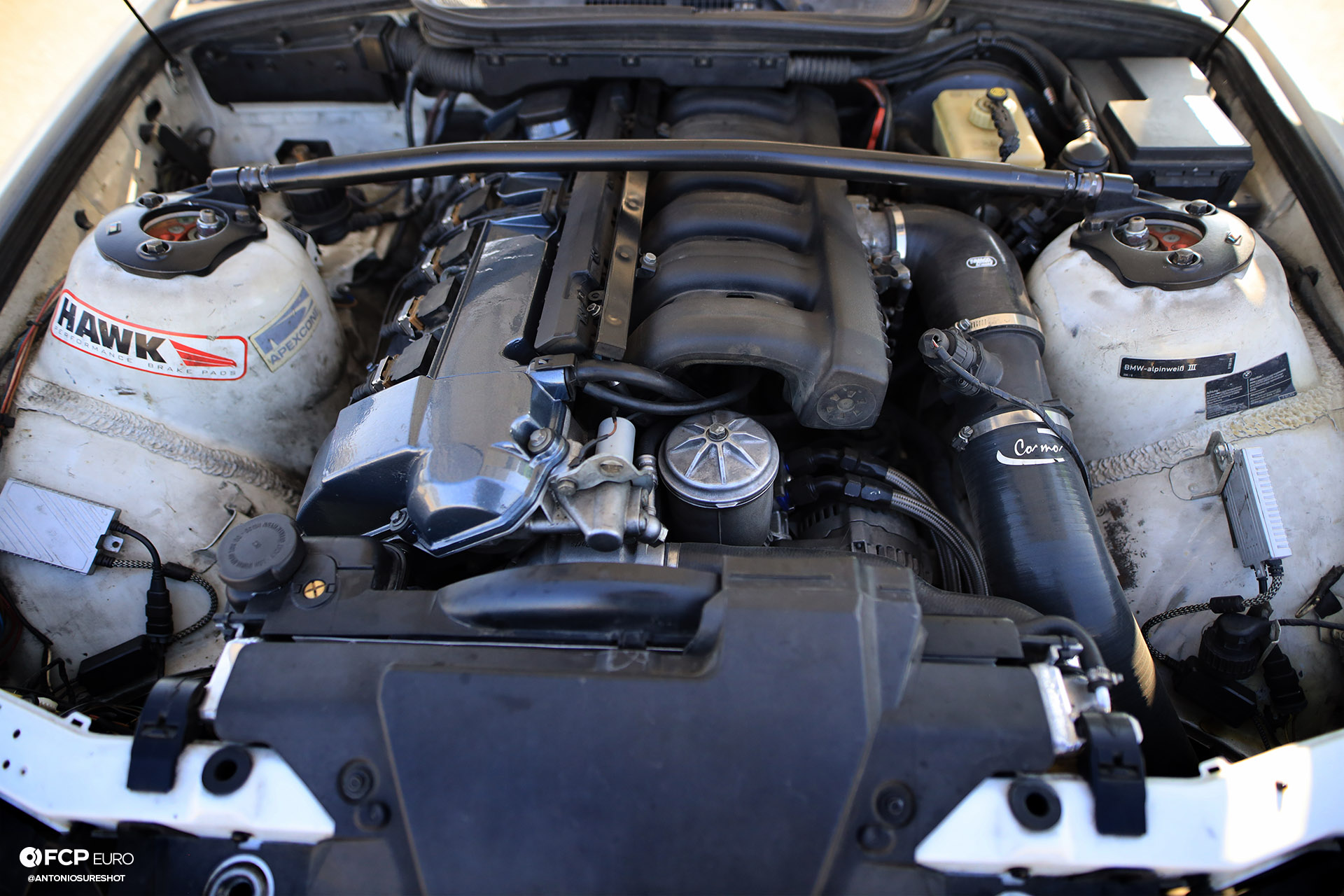
The early E36 M3s originally came with the S50 engine here in the US, but Cecil replaced it with a built S52 engine. Between the front subframe and engine are Condor Speed Shop engine mount bushings, with further reinforcement added to the front engine mounts. The intake manifold is replaced with an M50 version, and allows the Shrick specification intake camshaft to pull more air in from the Riot Racing big bore throttle body. Adding the M50 intake manifold is one of the most common modifications to the S52, and adds a noticeable bump to the mid and highend torque.
This also required the use of a 3.5-inch mass airflow sensor and custom-made cold air intake. The engine is lubricated with a high-flow oil pump, and even though the engine still uses the stock oil pan, it has a Bimmerworld oil pan baffle inside it to prevent oil starvation during high-G cornering loads.
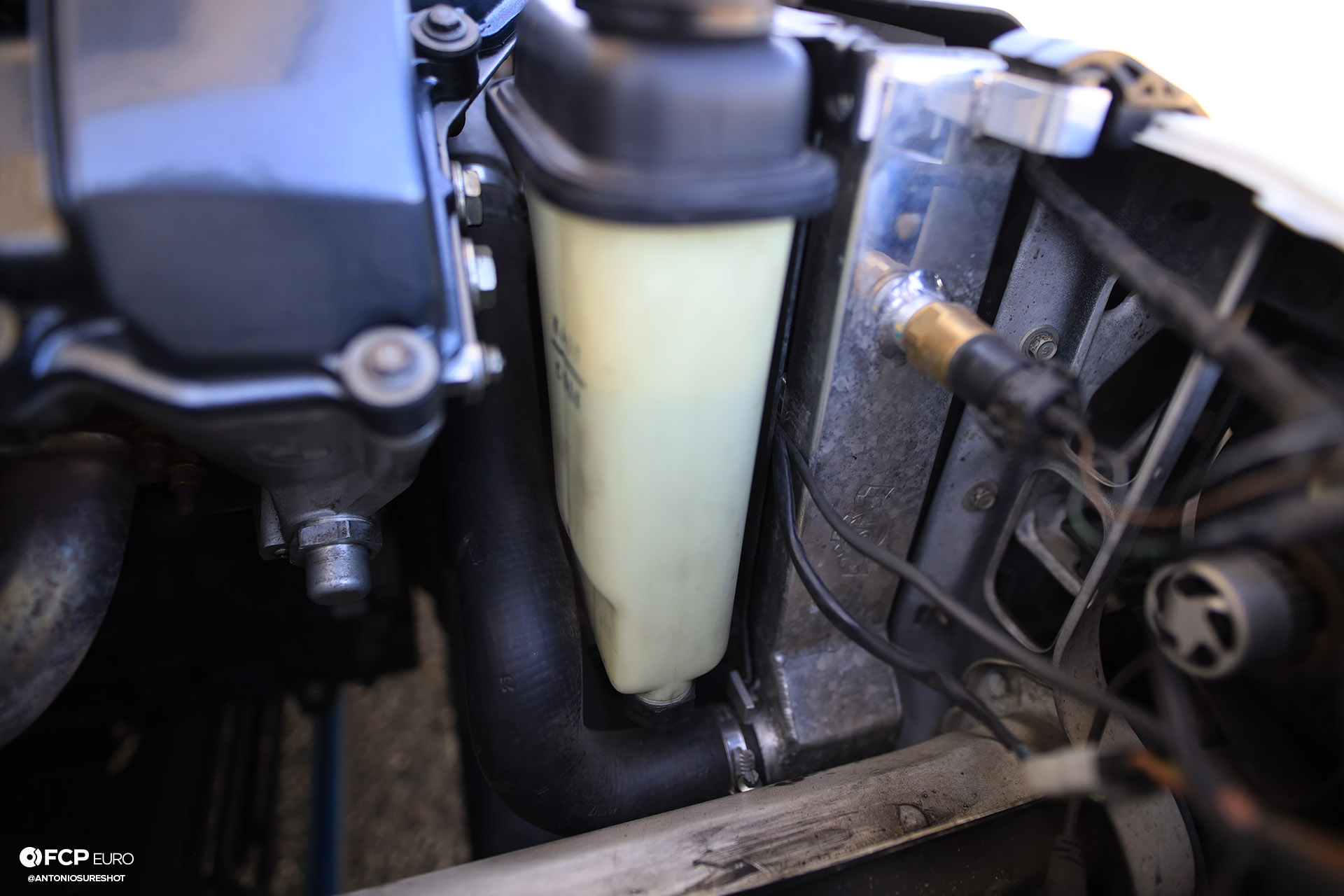
The goal since the start was to make it a reliable and fun car for all track weather conditions. Since Cecil mainly drives Southern California tracks that are located in hot, dry climates, most of the reliability work went into the engine’s cooling system. “E36s, including the M3, are notorious for having overheating issues,” explains Cecil, “so the cooling system was our first priority. After we upgraded the cooling system, my car hasn't had any issues on the track.”
Since cooling was important to Cecil, a CSF aluminum radiator was installed, along with a pair of 10-inch SPAL puller fans. Coolant flows from the engine to the radiator thanks to a Stewart high-flow water pump. More engine cooling is done with a Setrab oil cooler and an oil filter housing from an S54 engine.
The car is fed California 91-octane pump gas through dual fuel pumps paired with a set of 24-lb-per-hour injectors. A 413 red label ECU is tuned by Active Autowerke to produce 241-horsepower with 239-lb/ft of torque.
“What I think sets my vehicle apart from others,” says Cecil, “is its reliability and performance for a track and street-driven car.” Even when there are issues, the popularity of the E36 and M3 help his cause. Thanks to Facebook Marketplace, it's pretty easy to find used parts, and it's super easy to get new parts from websites like FCP Euro,” he said.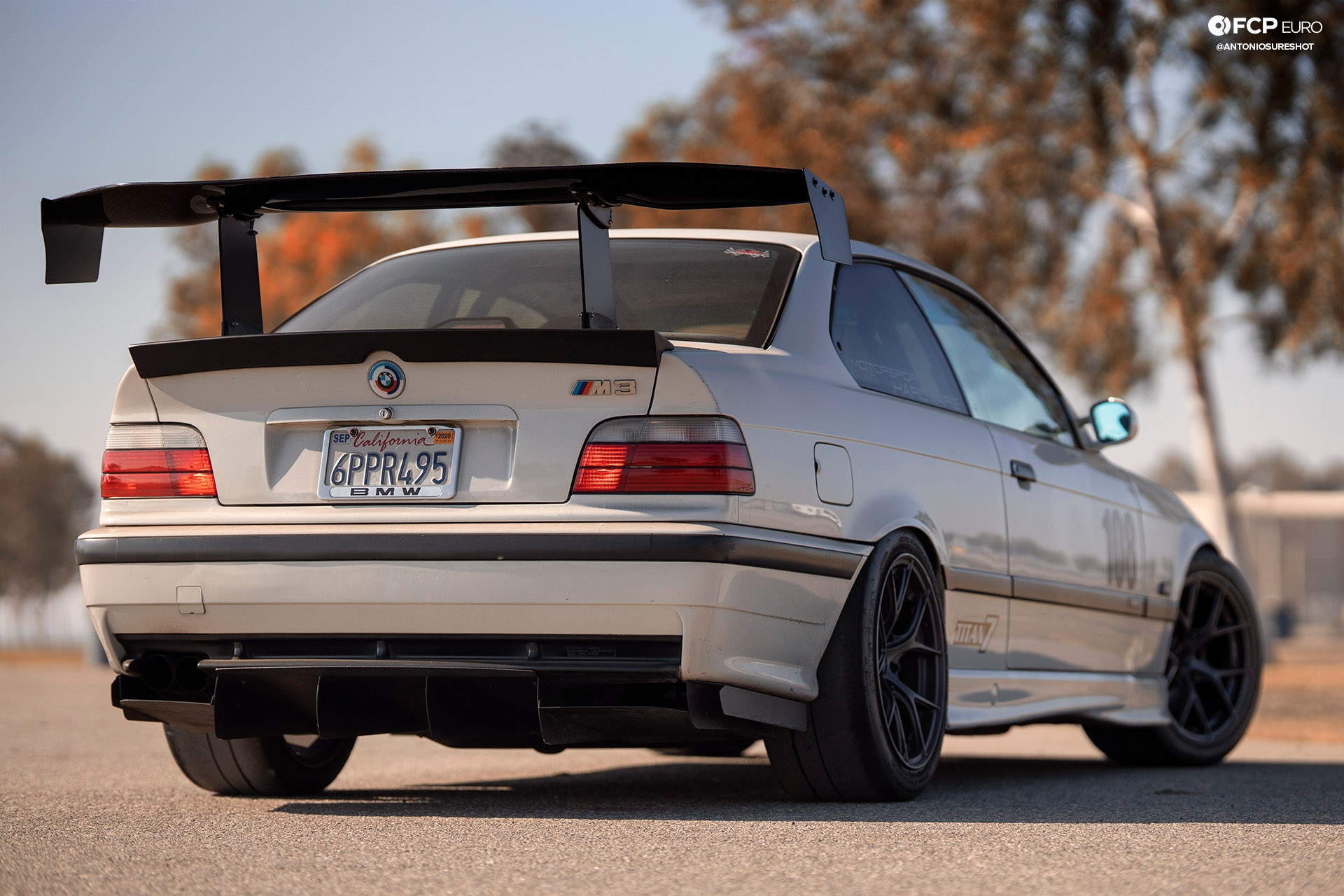
If there has been a high point of the E36 up to now, it has been the suspension and engine. “The setup and engine tune have definitely been amazing,” says Cecil, “With experts like Ryan Castro, CEO of Motorsport Hardware, and Amir Bentatou of RS Future, this car is on another level.”
It’s not entirely perfect, since this M3 started life as a street-driven car from BMW. Not being a “body-in-white,” which is what a stripped out chassis from the factory is called, there are many things you strip out when you're converting a street car to a race car. “If I had to do it all again,” admitted Cecil, “I would probably thin out the wiring harness. I'd get rid of wiring for electronics that are no longer used, which would make for a cleaner build.” If there is one thing he can improve to make the car faster now, Cecil says his priority is to get more seat time rather than spending time on modding the car further.

He also admits that while the enhancements done to the M3 are great, the thing he likes the most about owning the M3 is all the people he's met along the way.. “It’s all about the connections I have built with others,” he says. “Building the M3 and building automotive industry connections via Motorsport Hardware have allowed me to form solid relationships, enhance my knowledge, and share information with others. This includes aspects outside of cars and motorsports, too.”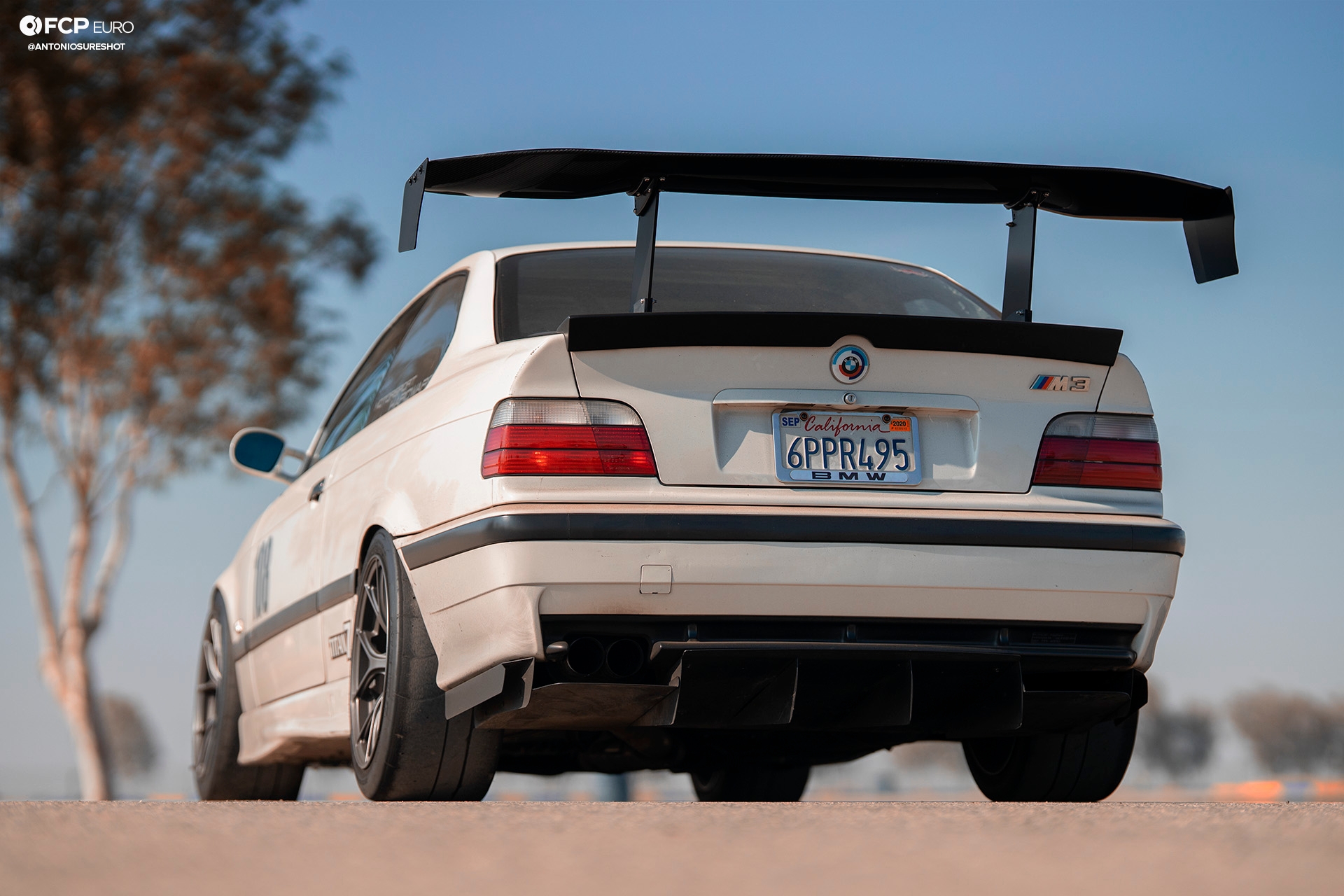
When we know there is a better version of something, it’s hard to not think that the grass is greener on the other side. This is especially true in the automotive world, with its plethora of special editions, performance levels, and other things that separate cars from others of the same model. Fortunately, BMW built their M-line to mean more than just a badge, seats, and tune. An M3 is drastically different from a regular 3-series thanks to improved suspension parts, better brakes, and more powerful engines along with the badges and seating.
Even so, there’s still more that can be done to the already-improved M3, as Cecil Perez has demonstrated with his car. He wanted something reliable for the track but also something that could perform in any environment. He went and removed the creature comforts, made the suspension more adjustable and rigid, had the horrendous factory cooling system swapped out, and replaced the original engine with a more powerful one that was overbuilt for high rpm reliability.
He also found that the M3 community can build more than just a car. With his E36, Cecil has created new friendships and business opportunities for Motorsport Hardware. Not all cars that can claim that accolade, but Cecil’s E36 M3 can—and it continues to do so on and off the track.
Story by Justin Banner
Photos by Antonio Alvendia
If you like this BMW E36 M3, you can find additional BMW content at bmw.fcpeuro.com, as well as more build features like this one here. If there's anything specific you would like to see, or if you have any questions/comments, leave them in the comments section below.











